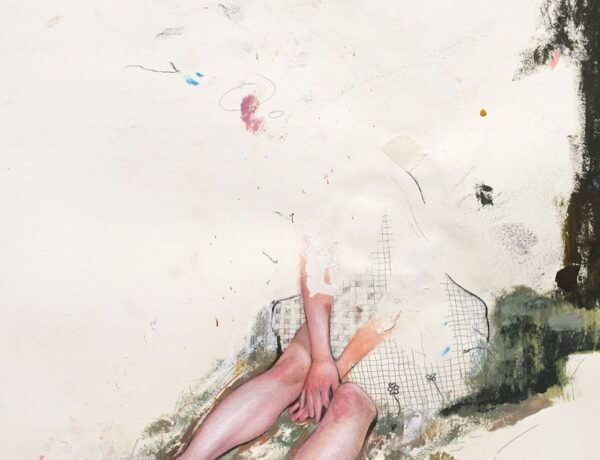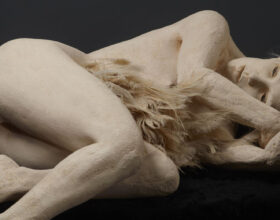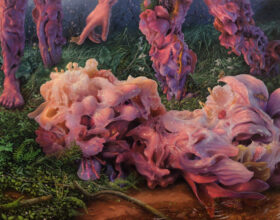Through ornate, overlapping lines depicting female form, figure, and finesse—we’re catapulted into the seemingly familiar terrain of woman as muse; with cheeky hints of the queerness of sensuality: a tease, the irrevocable kink of play. Where multiple stories are told and unfold within one figure, ‘woman’ becomes a vehicle, a medium of multiplicity – her depth, boundless.
The remarkable world of Maryam Gohar lures its viewers into thinking critically about themes of sex, motherhood, and woman in the confines of history—giving her the complexity, visibility, and contemplation she deserves.
Maryam is an Iranian contemporary figurative artist inspired by ancient Persian and Japanese art—which she uses to inform and infuse the background of her pieces, often interacting with and contradicting the delicate femininity found in the foreground. She agreed to share some of her artistic insights with our readers at Beautiful Bizarre.
I have been trying to define a new identity, always in battle with the world of packaging and name-giving out there.


Interview with Maryam Gohar
Maryam, thank you for taking the time to talk to our readers at Beautiful Bizarre. Do you have an artist statement you’d like to share?
I have been trying to define a new identity, always in battle with the world of packaging and name-giving out there. Everyday titles for women in particular, “wife”, “daughter”, “mother”, “victim”. I would prefer to keep them all inside on the verge of manifestation but not fully out there, more to be like a shapeshifter. I think “that” is closer to liberation; not to be called by any name or title, not to have a “role” to play in order to function.
What is your process from initial concept to final product? What medium and materials do you prefer?
I usually start the initial concept with the figure itself; the female body I find the most inspiring in particular, though not the conventional “idea” of the body predefined and unrealistic. The same goes with the faces I find interesting. By digitally cutting and pasting different pieces I design the primary concept, I decide the overall colour and value at this stage though I will keep it loose until the final stages so as to let the happy accidents manifest themselves whenever possible. Sometimes it turns out awesome and at other times awful!
I start the line work with coloured pencils, adding in the shadows and rendering the forms. Then there is the watercolour stage in which I apply the primary layer and work out the base colours. The lines take a backseat at this stage as everything looks “fallen apart and watery”.
Then as the last stage, I work with acrylics, adding thin layers one on top of the other. I try not to overwork the figure as I would like to keep it somewhat airy and hollow but there are times when to reach the ideal form or face, I get a bit heavy with the paint and lose the desired transparency I wanted in the first place.


How would you describe your aesthetic?
I think it is mostly form-based, meaning whatever helps pull out and show off the main figure in a subtle way. I would use background lines and colours to emphasize what is in the foreground and also create a bridge between the two.
Who are the women/subjects in your pieces and what do you want people to experience while looking at them?
I think the subjects in my pieces are instant displays of the emotional, mental, or even physical states that I have been going through while creating the piece; it could be vulnerable, sensual, seductive, or melancholic.
For the viewers of my works, I have no plans in mind; I just want them to freely experience whatever emotions they are having while looking at the paintings.
How do you achieve your collage-like layering of patterns, designs, and shapes?
To get technical about it, I would first copy the background image’s lines, which is usually a Japanese miniature or a Persian coffeehouse painting. I would then draw in the figure which I have already composed using reference photos and the digital collage technique. I try to render as many details as possible, bringing out the forms using light and shadows. I would then proceed to the watercolour stage which usually starts with a light-coloured wash on the whole thing, this would somehow “tie together” the background and the figure on top.
Then it is adding in the background details (parts that are not covered by the figure) and the figure’s overall colour and temperature and retracing its lines. I would then seal in the watercolour layer with a thin layer of gloss varnish mixed with matt medium. The acrylic stage comes next, which is pretty much the same. When things look satisfying or just as close, I would put on the final coating of gloss varnish and matt medium mixture.
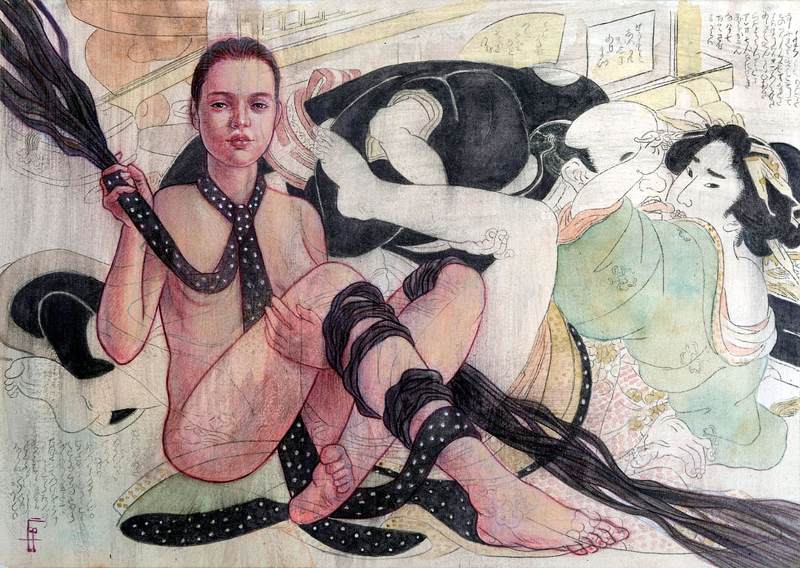
Being a woman we all harbor this motherly instinct within; whether it manifests itself in the actual world as a real being or forever stays in an imaginary state.
Do you have a set colour scheme in mind before starting a piece?
I usually start with a set scheme but I stay flexible along the way, the end result is at times true to the plan and at other times completely diverse.
At what point in your life did art become imperative for you to pursue and why?
It has always been an inseparable part of my life, using it as a narrative means to express myself, my feelings, and thoughts. However, considering the current body of work, which are more feminine, figurative, and at times sensual, I became serious about it once I was exposed to more passion-driven and personal art. Getting in touch with great figurative artists like Rebecca Leveille and having the chance to educate myself under their guidance opened up a whole new venue for me. I realized I can claim my own voice.

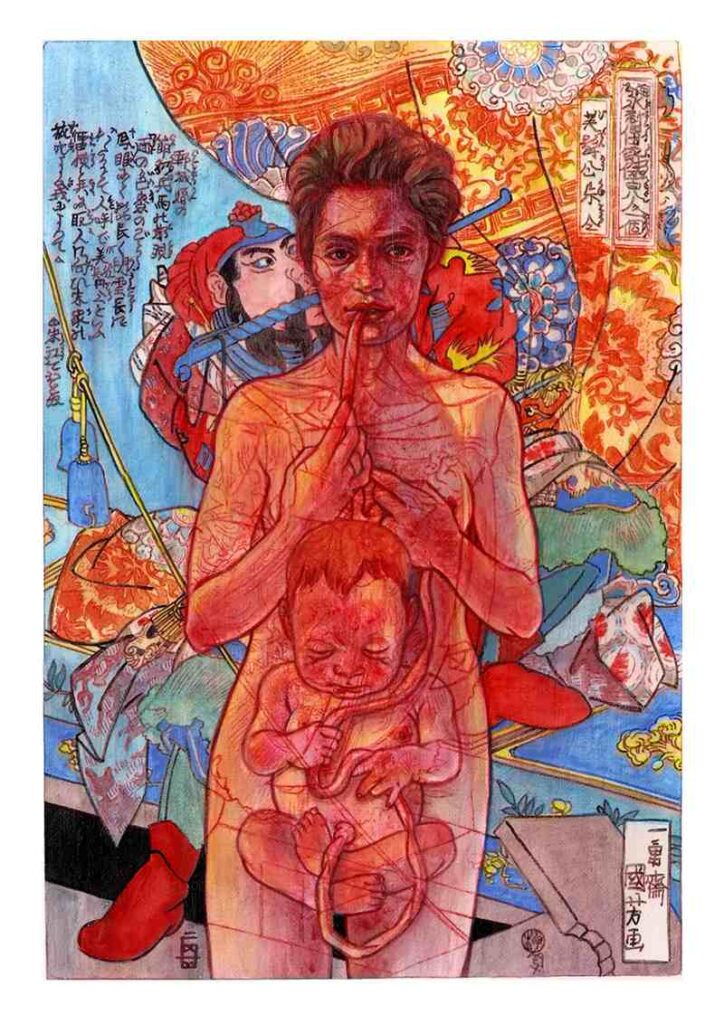
In your work, you often depict the (physical and emotional) connection between mother and child. Why and what does this mean to you?
Being a woman we all harbor this motherly instinct within; whether it manifests itself in the actual world as a real being or forever stays in an imaginary state. Personally, I have this love-hate relationship with the idea. I can say it is in art that I have been able to make peace with it, expressing it, at times, in the most unconventional manners. I often use the umbilical cord, this sacred lifeline connecting the mother and child, and change its meaning and redefine its function. For example, I’ve had a piece where it is being held by the main figure unattached to anything on the other side; it was when I had just terminated a relationship, in other words, “aborting” a hopeless something that has the life of its own. So, at times, I express it literally and at other times metaphorically.
What 3 words would you choose to detail your artistic approach?
Figurative, juxtaposition, linear.
What stories do you hope to tell through your work?
It changes based on what I am experiencing when am creating a piece. What remains the same is the protagonist, who having a vulnerable guise, is very much present despite their chaotic surroundings.
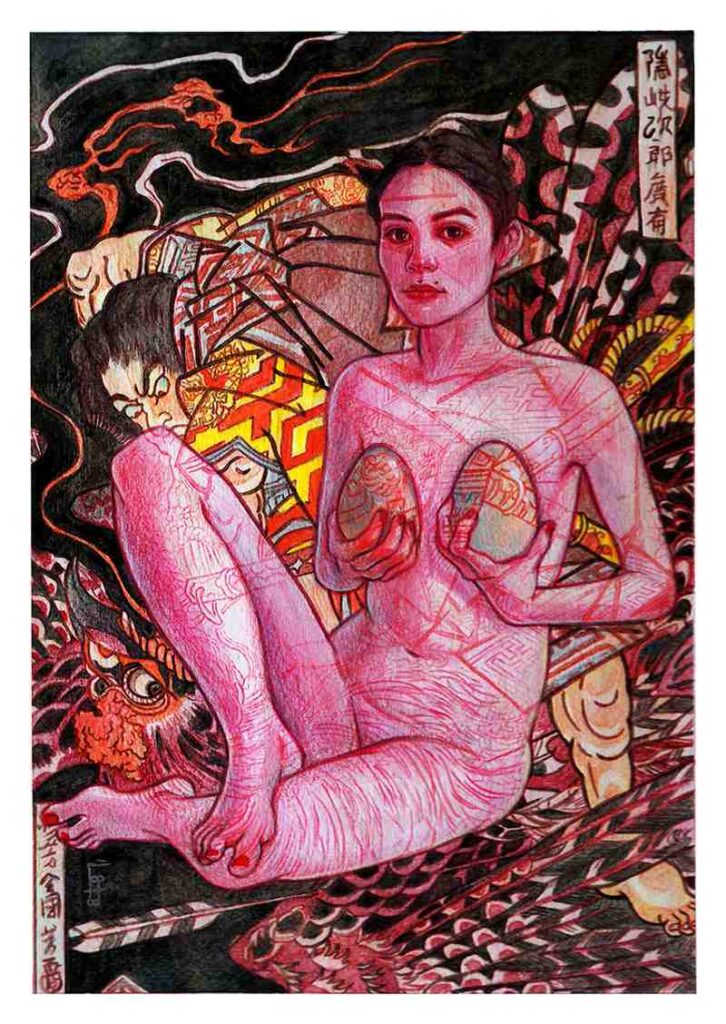
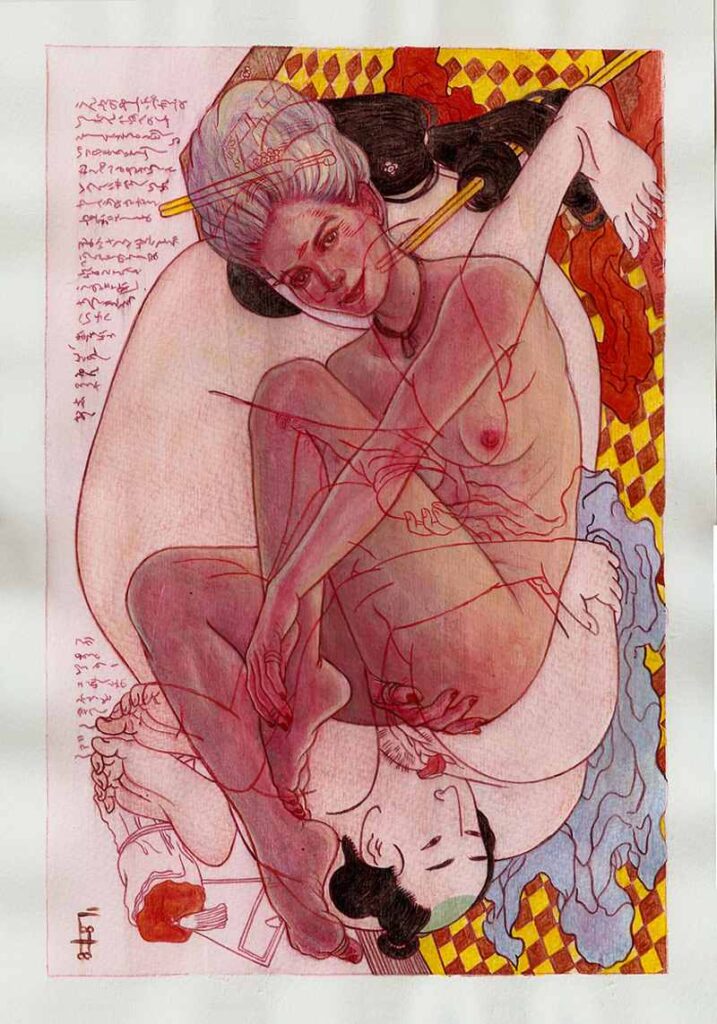
What are the most challenging aspects of your chosen medium and what piece has challenged you the most so far?
The challenging aspect of a water-based medium is its unpredictable characteristic, which comes from the flowing nature of water itself. To tame it and control it can be a difficult task so I have learned to “collaborate” with it, guide it, and embrace the happy accidents that could otherwise be interpreted as horrible disasters if I want to stick too religiously to the main plan. For bigger sizes, giving the medium a more expanded terrain would be inevitably more challenging to handle. Still the wilder the process, the more didactic it would be.
What is your favorite piece?
Since I use every piece as a research opportunity, whether it is experimenting with a diverse set of colours, different poses, body types, backgrounds, etc., they all are unique and memorable for me.
What artists are your biggest inspirations?
There are many amazing artists whose works I admire: Natalie Frank, Inka Essenhigh, Rebecca Leveille, Jenna Gribbon, and Robin F. Williams to name a few.
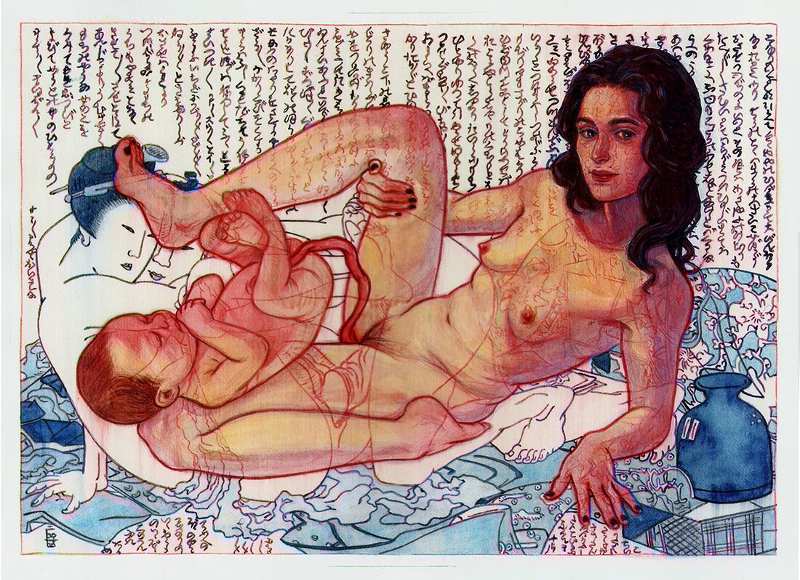
If you could give yourself advice on starting out as an artist, what would it be?
I would just tell myself not to compare. Every one of us, artist or not, has our own individual path to tread on. Life has equipped each of us with a specific set of skills enough to survive and succeed in that particular path. I would appreciate my failures and successes a bit more if I were to go back.
Are you working on anything new? What does the future hold?
I am working on a piece for an upcoming annual group show.
About the future, I try not to think about it much, I learned the hard way that overthinking about things that are yet to come will drive me into a state of apathy. So I just take each opportunity that presents itself along the way one at a time. It may mean a long endless journey but it is joyful nevertheless! :)


